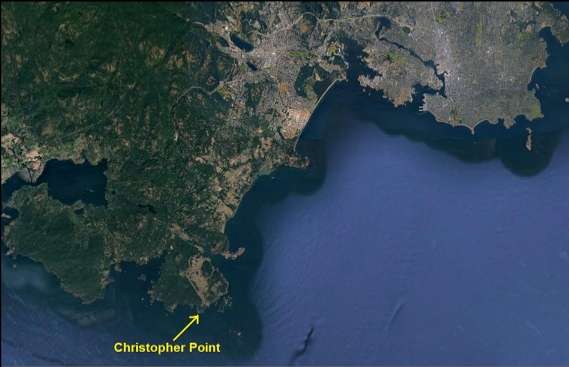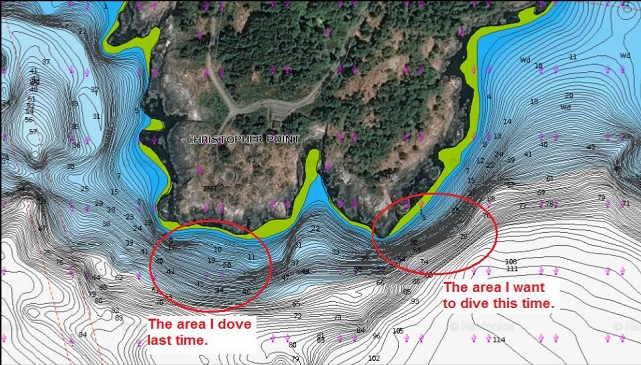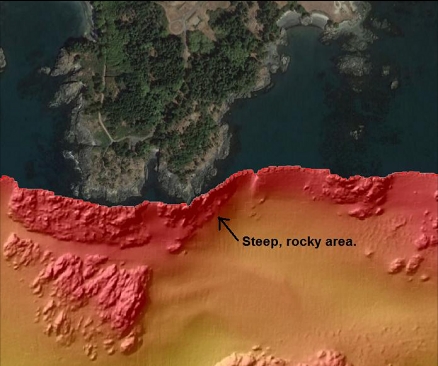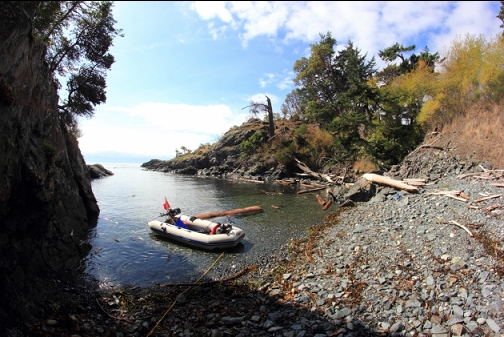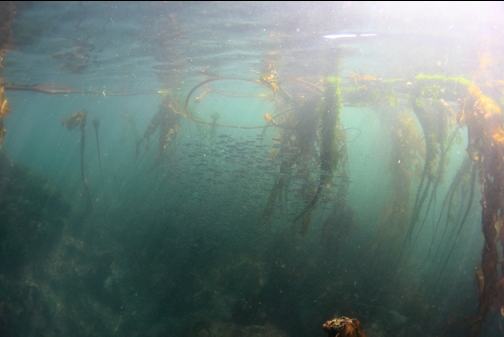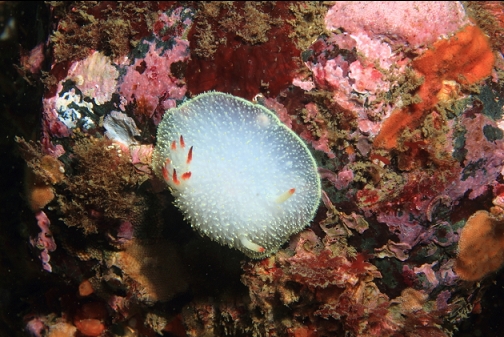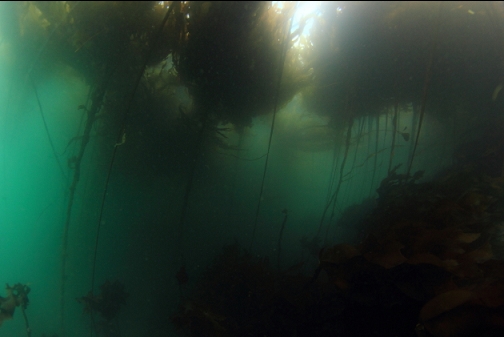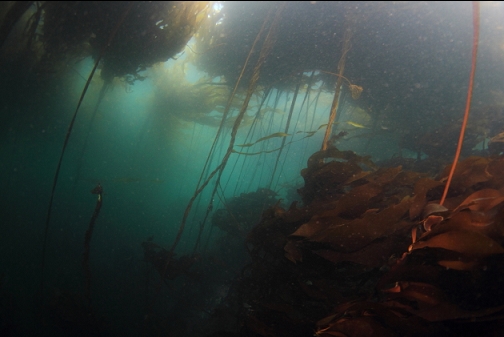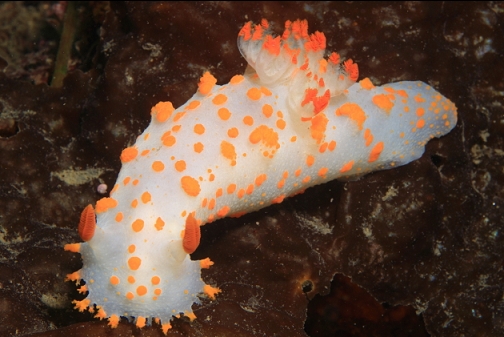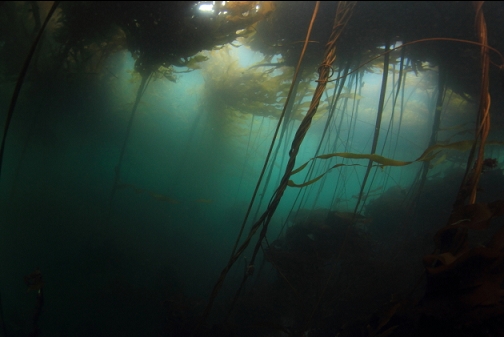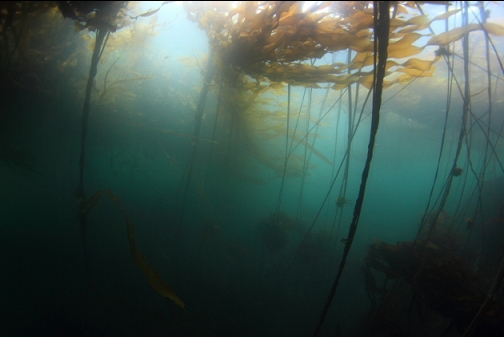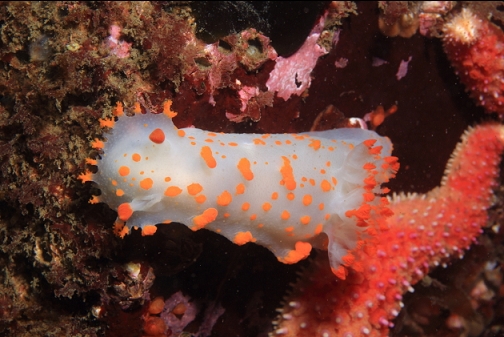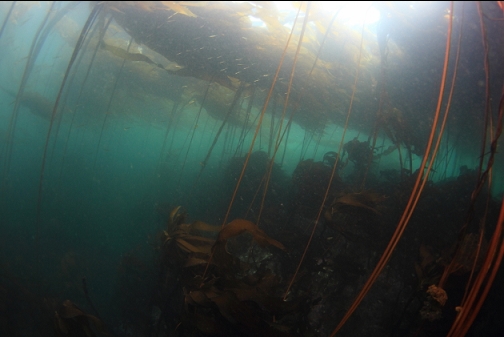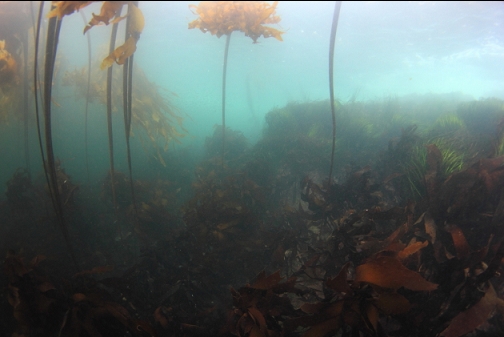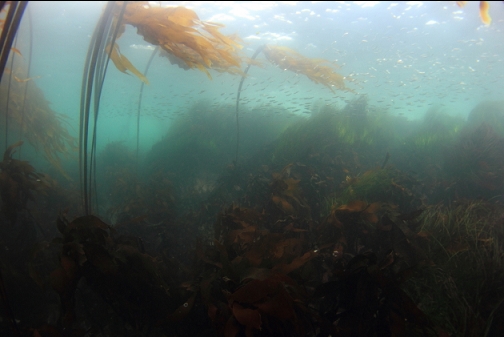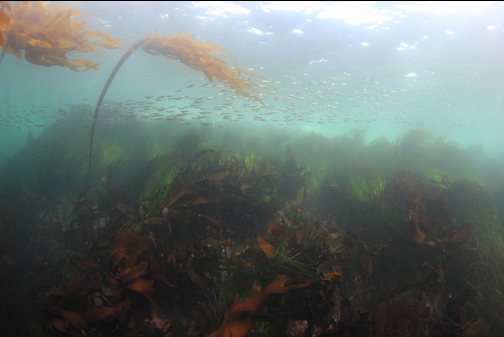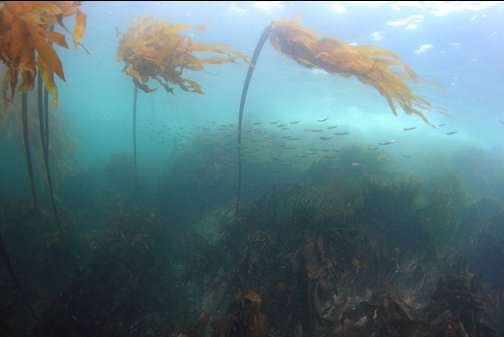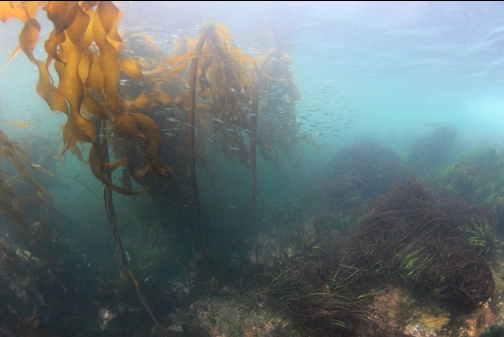I've been meaning to come back to this most-Southerly point of Vancouver Island for a few years now. Last time I was here, I dove straight out from the tip of the point. This time I want to dive around the East side of the point, where the marine chart shows a steeper drop to around 100' deep. Today (Sept. 20, 2019) I anchored near a pebble beach in a tiny cove that cuts up into the middle of the point.
I had planned on tying up my boat around the East side of the point, which was where I wanted to dive, but there was a swell rolling up the Strait and crashing on the rocks so the narrow cove in the middle of the point was the only sheltered spot. This meant a longer swim to get to where I wanted to dive. It was a 150-meter snorkel through the kelp to get out of the cove. Visibility here was only around 10' and it seemed like there was sediment suspended in the water. The kelp was full of schools of young herring.
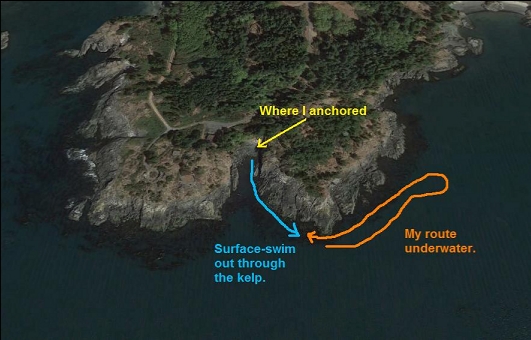
When I reached the tip of the point I descended and swam through the kelp to the East side of the point. Visibility farther out from shore had improved to 15-20'. I was diving when the Race Passage Current table was in the middle of a maximum 3-knot ebb, but the current here was actually flooding. It was running in the direction I was swimming and I knew I would have to swim against it to get back. So far, it was weak enough that I could swim against it, but it made me more cautious as I continued to swim around the corner.
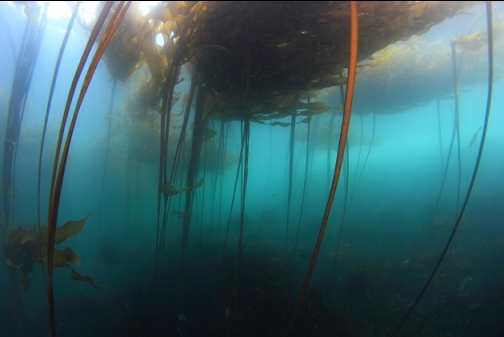
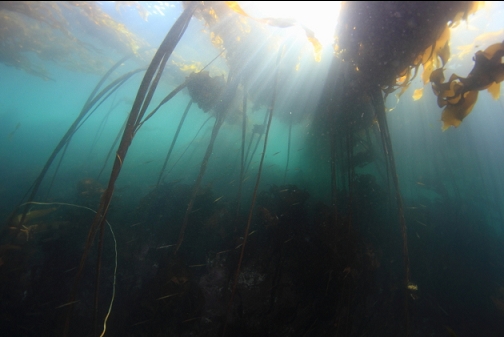
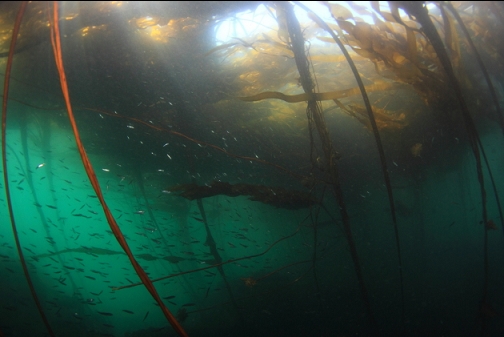
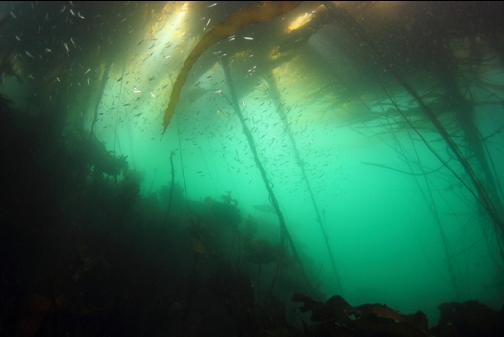
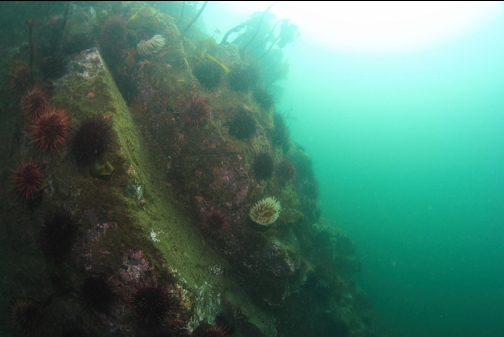
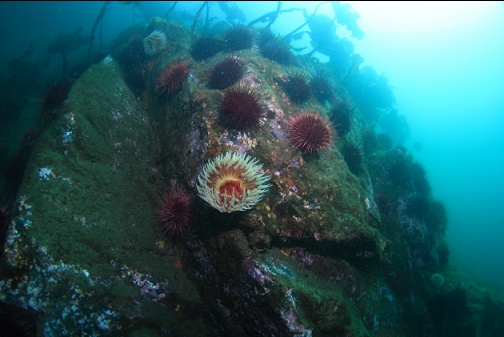
I descended at the point and swam up along its East side. I was a bit surprised at how grey and silty the bottom was considering the current. I assume it was a coating of diatoms. The rocks sloped down in ledges and small walls to a sandy bottom 60' deep. There were a few boulders out on the sand (maybe 70' deep) with some plumose anemones on them, but the current was too strong to stay out there long. Back at the rocky slope, there were some more plumose anemones, fish-eating anemones, urchins, zoanthids and tritons laying eggs. For the most part though, there was lots of mostly bare, silty rock. I didn't see many fish, but there were 2 Irish lords, 2 cabezon, a couple of small lingcod and a few copper and quillback rockfish. I also saw a small group of yellowtail rockfish. As I continued swimming North along the slope, I reached an area where the rocks met the sand at around 80' deep. I assume this is as deep as the rocky slope gets here.
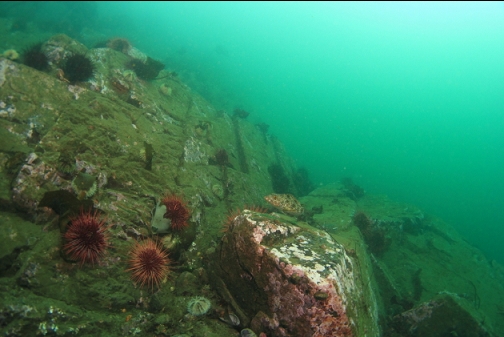
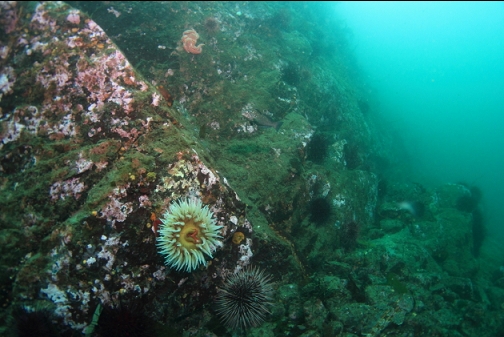
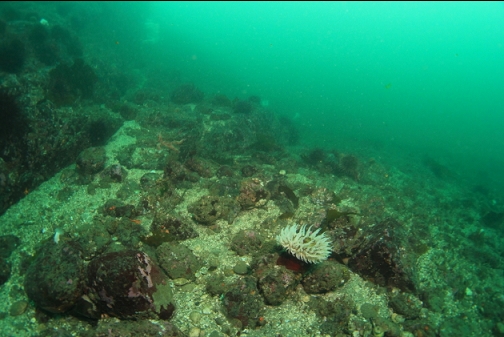
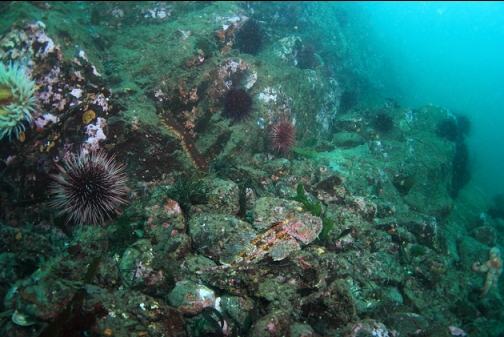
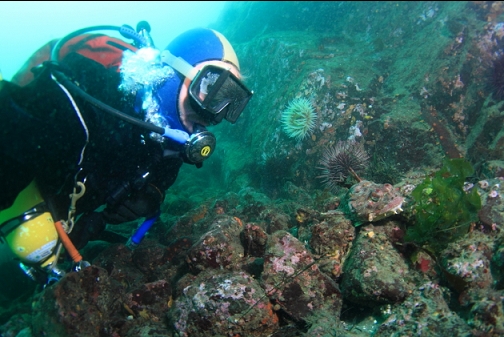
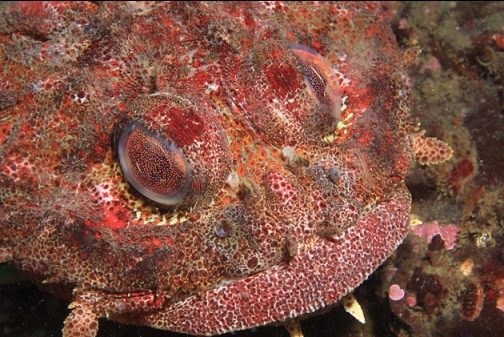
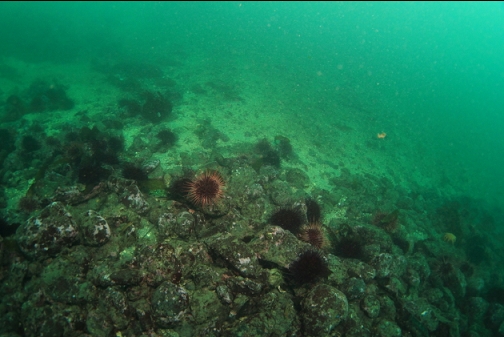
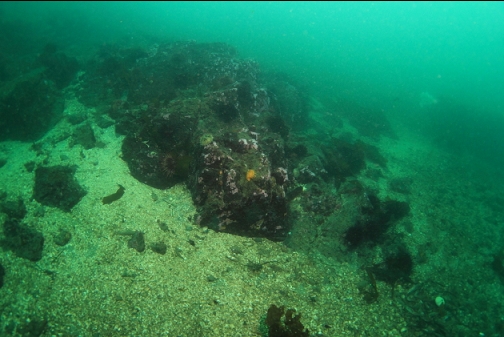
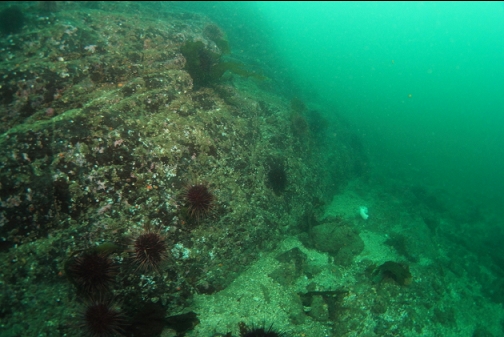
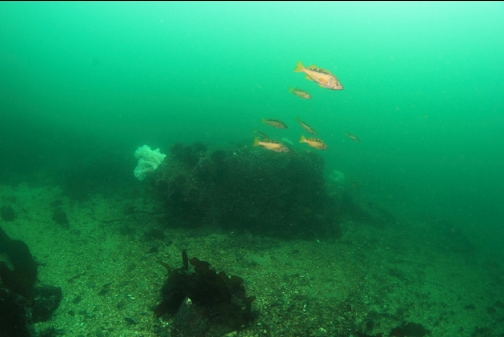
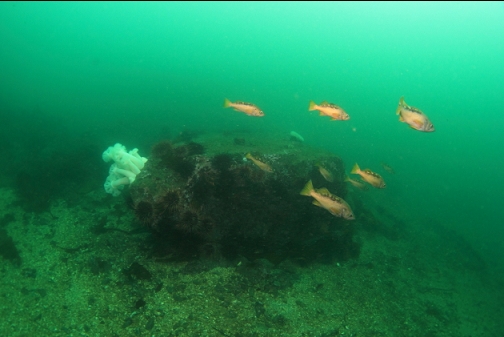
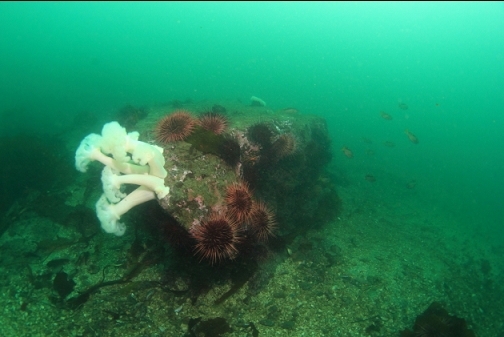
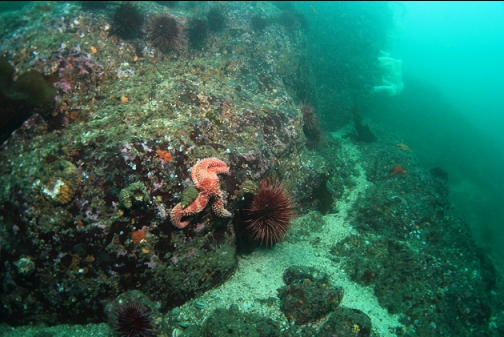
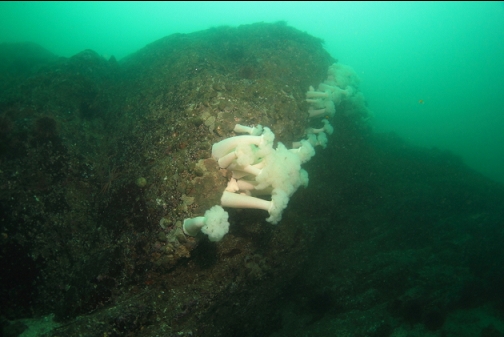
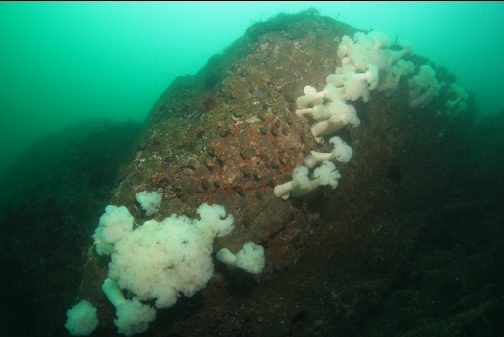
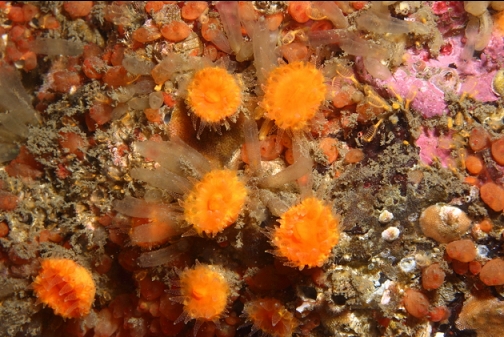
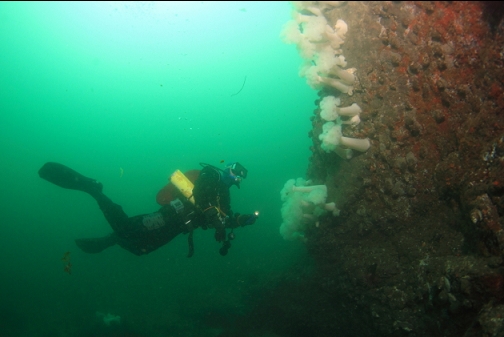
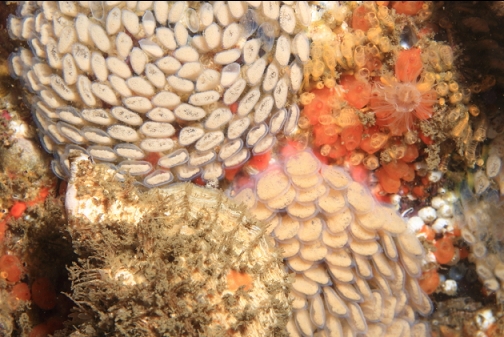
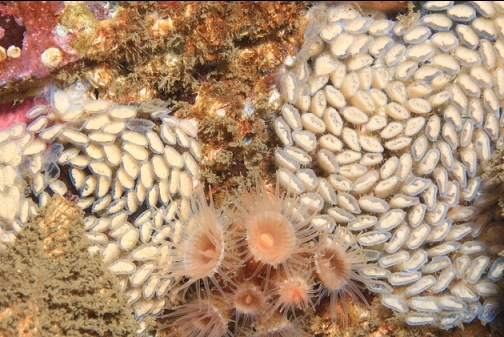
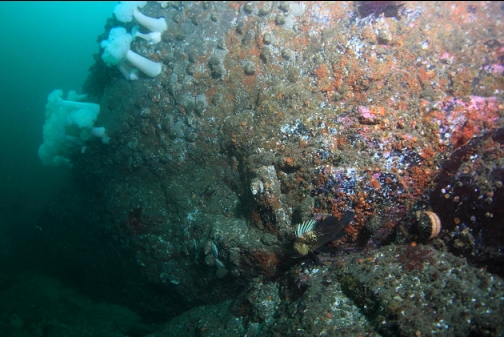
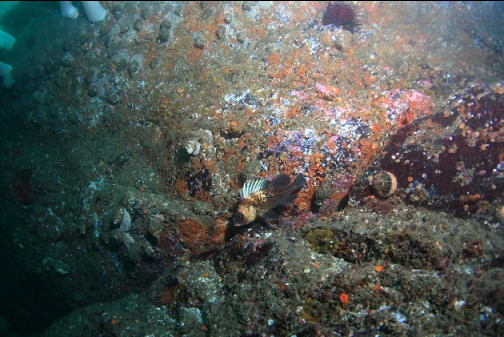
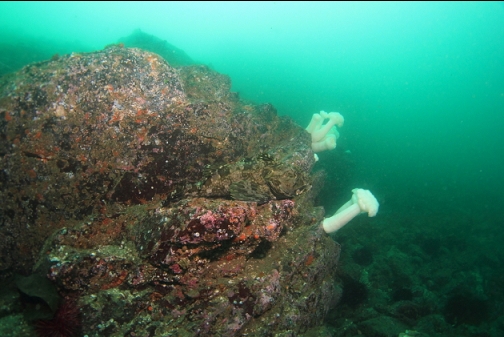
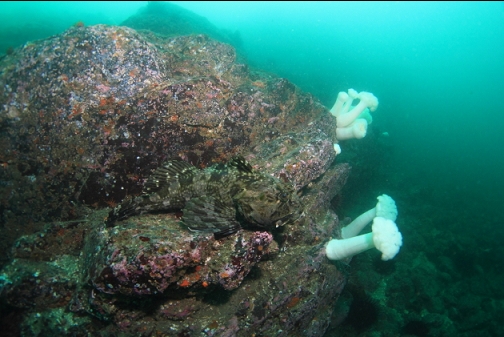
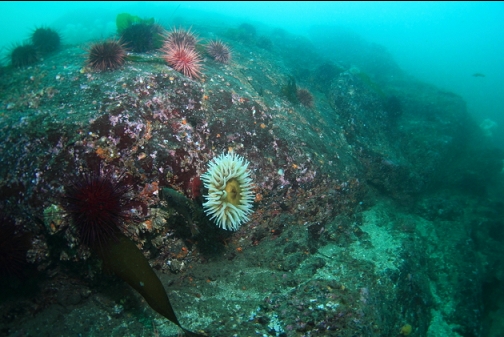
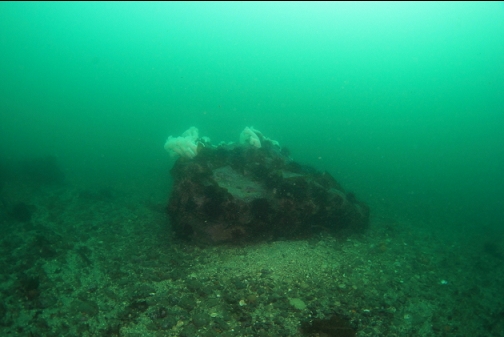
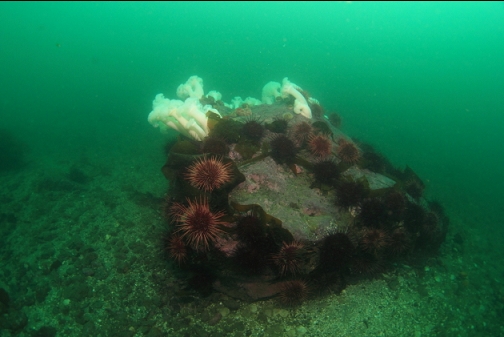
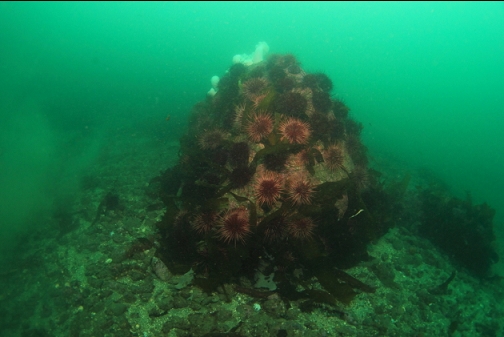
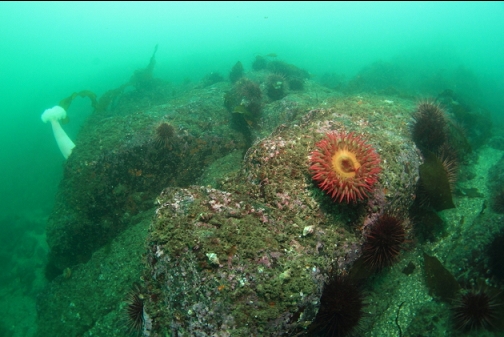
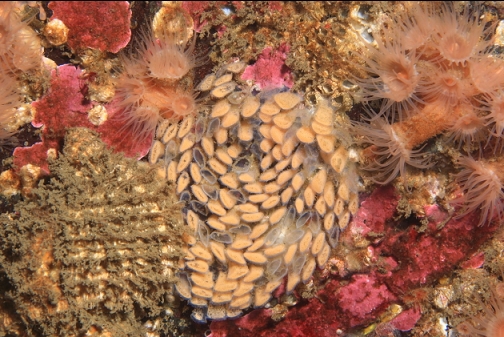
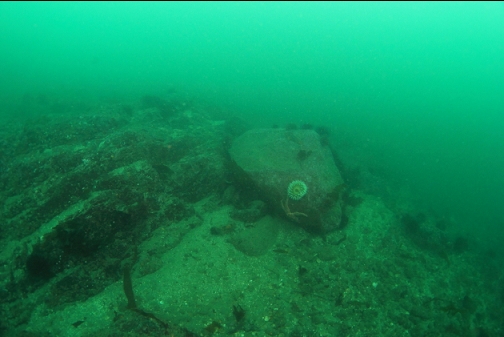
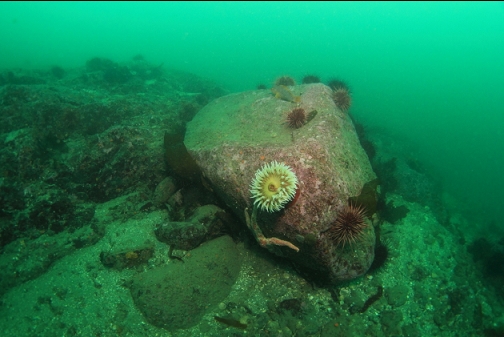
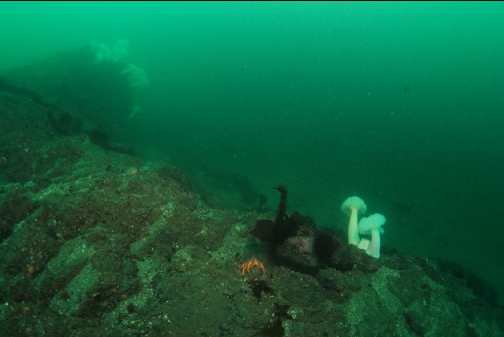
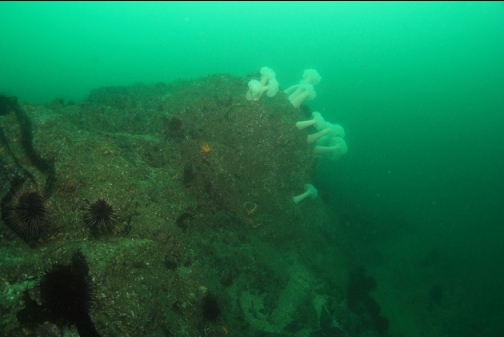
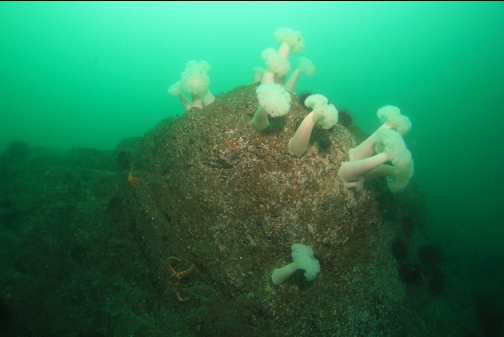
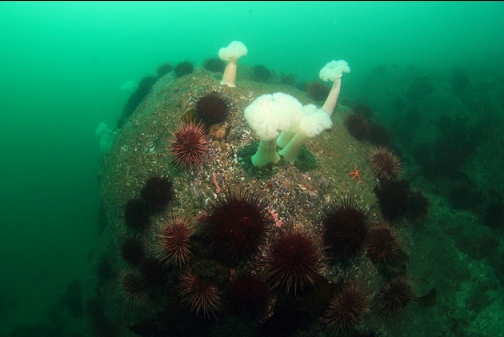
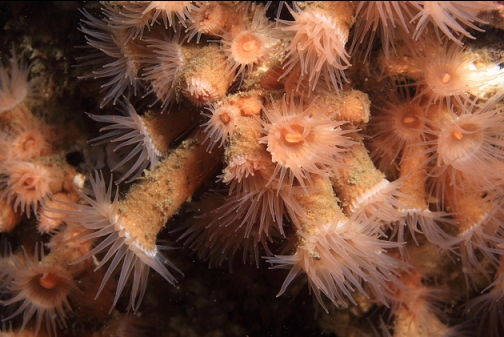
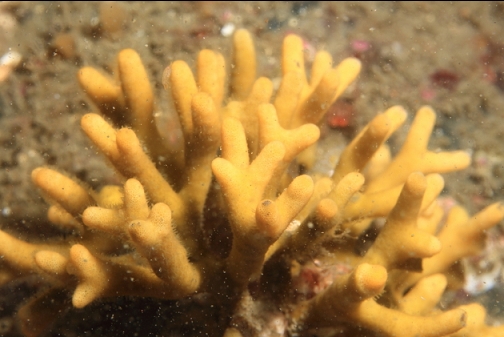
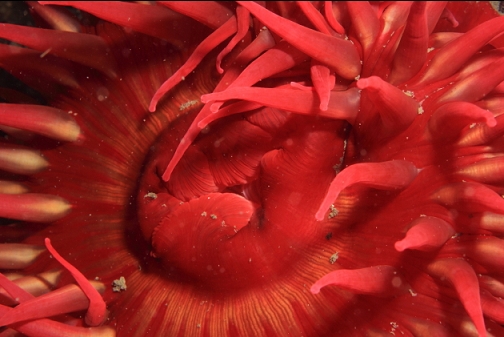
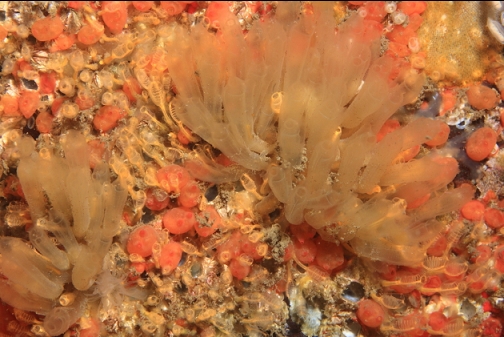
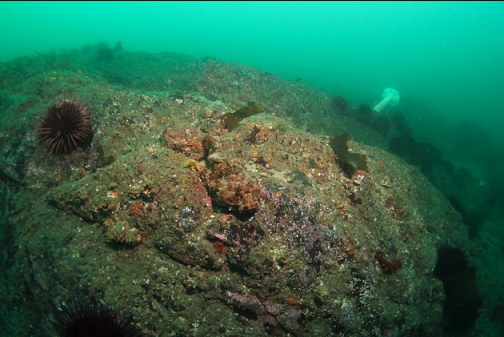
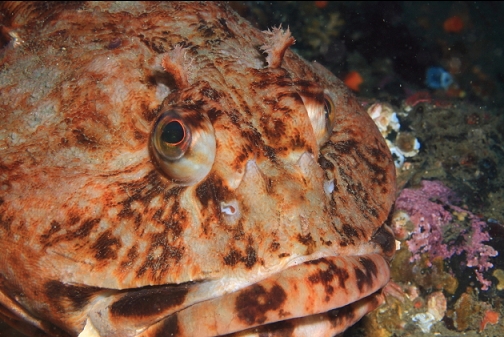
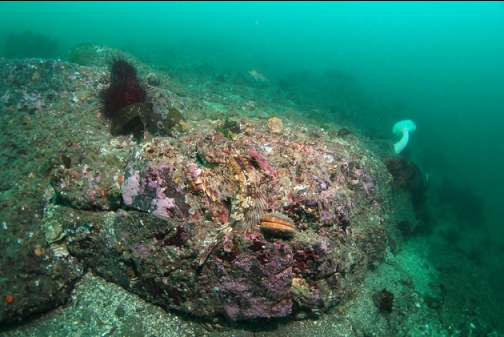
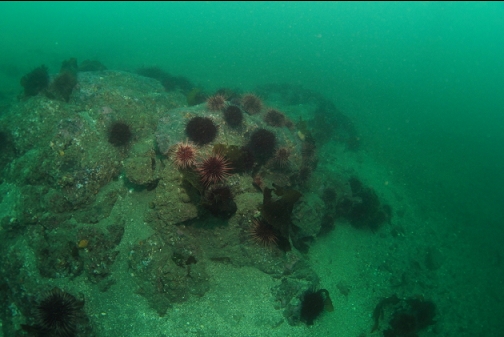
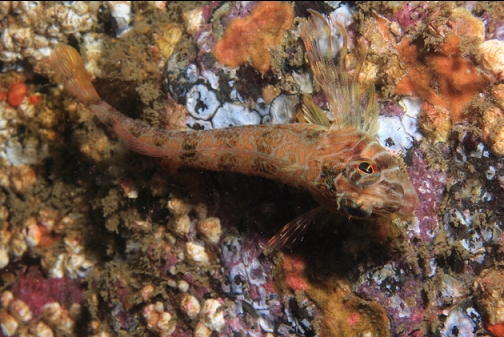
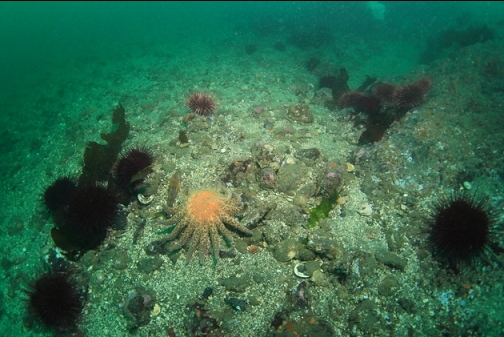
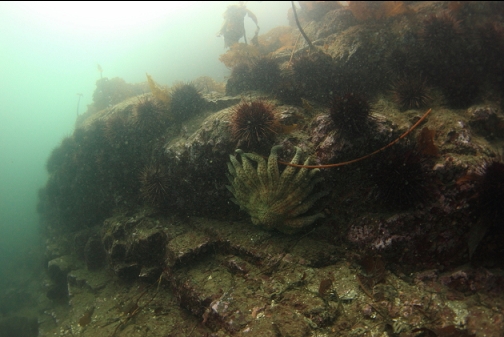
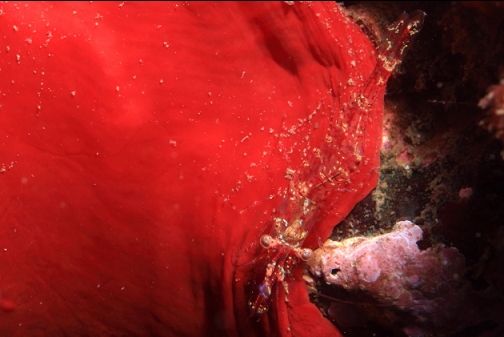
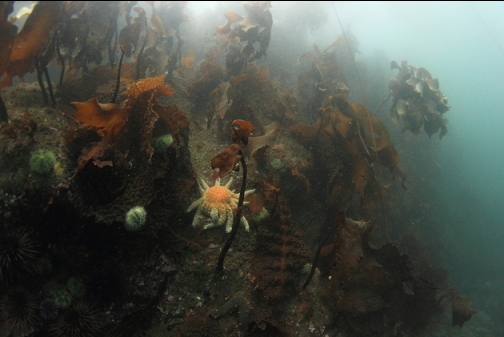
I ascended up the slope and swam back towards the tip of the point about 30-40' deep. The current seemed to have slowed down and changed direction. For some reason, my wide-angle camera strobe stopped flashing. I saw 2 large sunflower stars. These were the largest ones I've seen since the big die-off a few years ago. I took a few strobe-less photos of them and tried to change the white balance later using software. I swam up through the kelp back around the corner into the cove where I started.
I doubt I'll be back to this part of Christopher Point. I don't think the amount of marine life is worth the risk of the exposed location and the current. The previous area I dove at Christopher Point years ago had a bit more of the colour I would expect for such a current-swept area, but overall, there are much better dive spots nearby.
